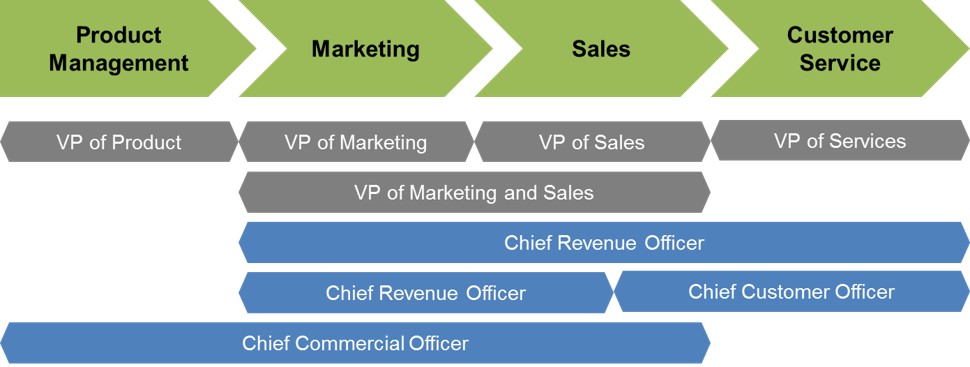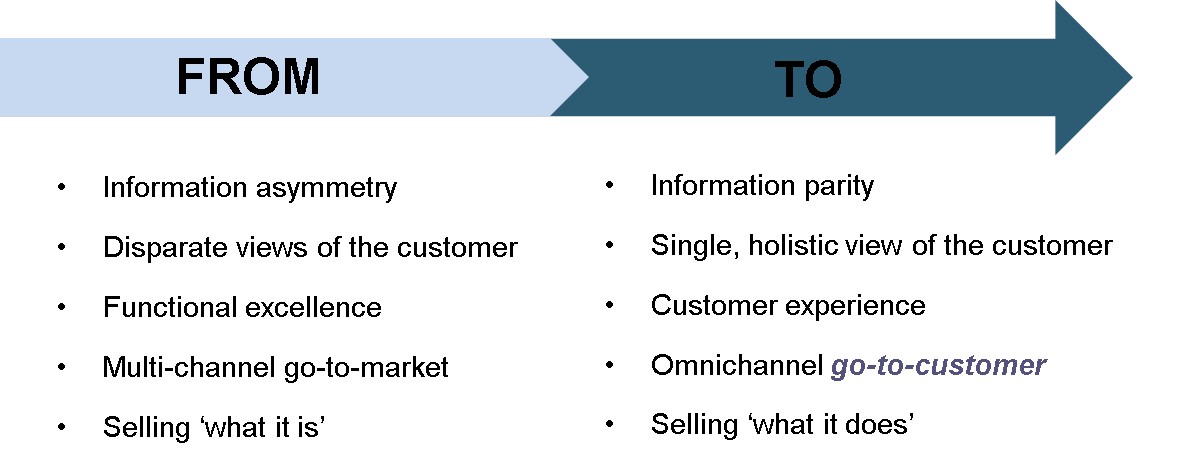Revenue Leaders: Adapt Your Models to the ‘Age of the Customer’
In April, the Alexander Group hosted its second European Growth Summit in London. A group of distinguished executives discussed the topic of the changing buyer’s journey and how revenue leadership models are evolving to drive growth. This article presents a summary of insights from the Summit.
The Tectonic Shifts in Buying Behavior
For decades, many B2B companies have leveraged the power of information to persuade and win customers. Companies have deployed sales organizations like armies: marching across the land capturing customers with their persuasive arguments of features, benefits and ROI. Today legacy sales “armies” are hitting a virtual wall. Customers now arm themselves with more information than ever before. They have removed the advantage of information asymmetry and changed the rules of the game. To survive and grow, companies must respond to these trends and update their customer-facing models. Consider the following trends:
- The Seller’s Information (Dis) Advantage. The internet arms buyers today with the same or more information than sellers, moving us from a world of information asymmetry (sellers know more than buyers) to information parity (buyers know the same, or more). Thus sellers do not bring value when they “show up and throw up” basic product and service information. They must bring value, insights and expertise. “You have to have a point of view just to get an appointment with the new buyer,” one Summit participant stated.
- The Customer’s Experience Matters. In the age of the product, companies could focus on functional excellence – marketing, sales and services did their respective jobs. In the old world, sales was all about great execution, especially regarding the close. Now what happens before and after the sale is critical. The shift to services-led models means sales engages sooner and stays involved later to ensure a smooth experience.
- Single View of the Customer. Buyers expect to have a seamless experience with a company. Fortunately, this type of interaction is now possible. Field sales representatives with complete customer history on their tablets will be the norm. From marketing, to sales, to support and service, organizations must operate with a single, holistic and complete view of the customer.
- From Multi-channel to Omnichannel, and from Go-to-market to Go-to-customer. Multi-channel models focus on optimizing performance within each channel (e.g., direct, phone, web, retail), usually against channel-specific revenue goals. Sometimes this approach works. But it can create friction and channel competition. Omnichannel is a term that comes from retail marketing, but increasingly applies to B2B companies. Customers want to speak with a salesperson, research the company’s website for qualifications and chat with peers on social networking sites to validate the vendor’s claims—all at the same time! This “omnichannel” approach is here to stay. The traditional multi-channel “go-to-market strategy” is dead. Today companies require a go-to-customer strategy designed around how the customer wants to engage across multiple channels simultaneously.
- ‘What It Does’ Is What Matters. Labels, speeds and feeds, features and benefits – none of these matters in a services-led economy. When customers demand Xaas (everything “as-a-service”), what matters above all is the service and customer experience. This means marketing can throw away huge volumes of product-specific marketing collateral. Instead, companies must create new value propositions and messaging that speak to results and outcomes. And they must deliver on their promises. Cloud sales models are evolving customer-facing organizations and roles to ensure smooth, integrated customer experiences. In particular, Cloud companies that employ freemium and “land and expand” usage-based models are leading the way.
Adapting to the Age of the Customer
These trends are driving companies to adopt new strategies, structures, roles, processes and tools. At the European Growth Summit we discussed some of the following changes companies are testing and experimenting with.
It starts at the top. New revenue leadership roles are emerging to drive alignment across product, marketing, sales and services functions. The Chief Commercial Officer, Chief Customer Officer and Chief Revenue Officer are examples of roles with broader responsibility than traditional functions.

It requires greater organization alignment. To drive this alignment, industry leaders are forging new cross-functional processes. Product development and marketing must go beyond internal input and systematically incorporate sales, services and customer feedback in their planning. Sales must have up-to-the-minute knowledge on a customer’s usage and experience to drive intelligent conversations on expansion. Customer support, services and success teams also need up-to-the minute customer data. Their ability to identify, qualify and properly handle or hand off depends on it.
And it requires better data, tools and enablement. Revenue planning requires more precise customer targeting data to ensure more accurate and efficient customer coverage. Revenue leaders must transform the sales strategy, enablement and operations functions so customer-facing roles have clear responsibilities as they collaborate and cooperate from a “single source of truth” about the customer. For example, the ‘hero’ in the sales world of old was the seller that closed the big deal then walked away. Now the “close” is often the start, not the finish, in the sales process. The best sellers effectively orchestrate resources across the enterprise to help ensure customer success, retention and growth.
How should revenue leaders make this transformation? First, they need commitment from the top. “We need advocacy from the top to do real enterprise selling in a world where the products aren’t flying off the shelves anymore,” one participant shared. Adapting to the age of the customer is not a siloed activity. It requires the buy-in and participation across the C-suite. Second, revenue leaders need to establish new processes and systems across product, marketing, sales and service that map to the buying journey of their target customers. Third, revenue leaders need to invest in training and replacing legacy marketing, sales and services teams with ones aligned to the new go-to-customer model. And finally, they need to build out sales analytics, enablement and operations functions to support it all. This type of transformation can be particularly challenging in the EMEA markets, where as one participant stated, “The economy is ahead of regulation.”
